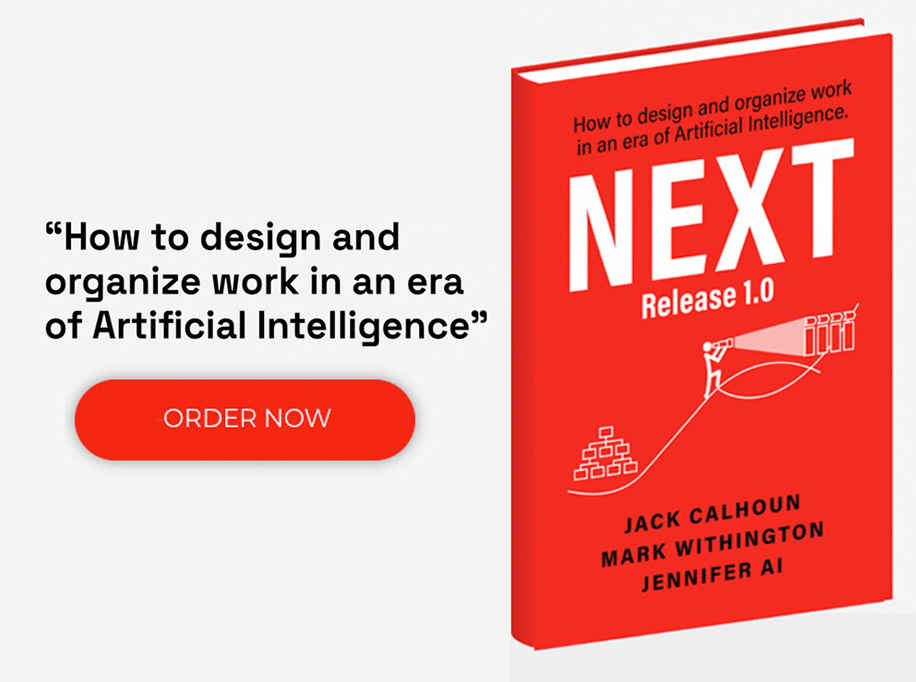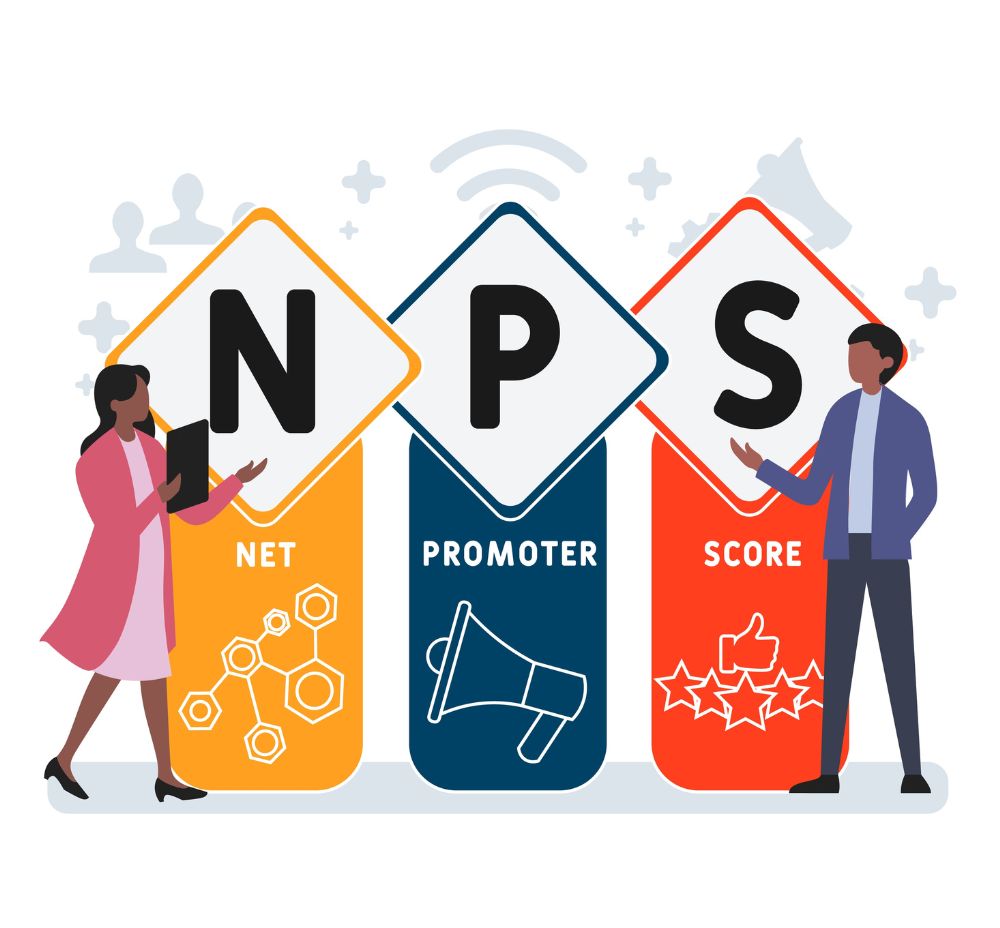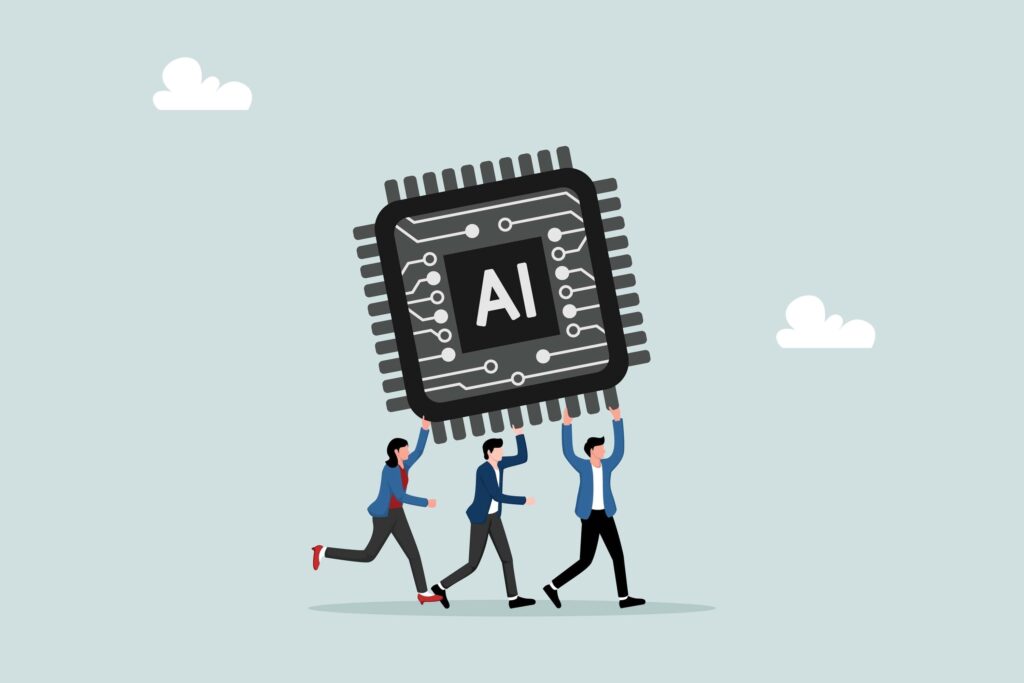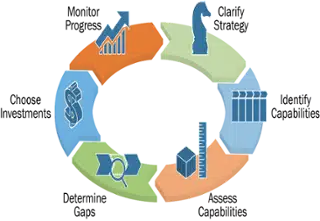The business landscape is a constant tidal wave, and those caught unprepared by the next shift risk getting swept away. That’s where digital disruption comes in – a force reshaping industries and challenging traditional models through the power of technology. But what exactly is it, and how can you navigate its currents towards success?
In this blog, we explain digital disruption – discussing examples, causes, and benefits – and how to thrive in the wake of digital disruption.
What Does Digital Disruption Mean?
Digital disruption isn’t just about shiny new technologies but redefining how business is done.
Digital disruption refers to digital technologies’ profound impact on traditional industries and their business models. It involves using digital innovations, such as artificial intelligence (AI), Internet of Things (IoT), mobile apps, and online platforms, to create new ways of doing business and challenge and
transform established methods and markets.
These innovations aren’t just trends; they’re game-changers.
When embraced, digital disruption is the launchpad for digital transformation. We define digital transformation as leveraging new technologies to simultaneously run and improve your 1.0 business model while you orchestrate the transformation to your 2.0 business model. New enabling technologies drive the vision and development of new business model innovations to fundamentally reengineer how you operate and deliver breakthroughs in performance, value, and experiences for customers, trading partners, and employees.
Examples of Digital Disruption
Digital disruption is an ongoing journey that is transforming every industry and adding household names to the lexicon. Here are some ways digital disruption has reshaped industries, often leveraging technology to deliver greater convenience, efficiency, and value to customers:
- Transportation: Ride-sharing platforms like Uber and Lyft disrupted the taxi industry by providing a convenient, cost-effective alternative through mobile apps. Tesla disrupted the automotive industry by popularizing electric vehicles and pioneering self-driving cars.
- Hospitality: The hospitality industry will never be the same thanks to Airbnb. Airbnb disrupted the hospitality industry by allowing individuals to rent out their homes or spare rooms to travelers, challenging traditional hotel business models. Online travel agencies like Booking.com have disrupted the travel industry by offering a one-stop platform for booking accommodations, flights, and activities.
- Retail: Amazon disrupted traditional brick-and-mortar retail by offering a vast online marketplace with fast shipping and competitive pricing. Alibaba disrupted retail in China and abroad by creating a comprehensive online ecosystem that connects businesses and consumers, encompassing eCommerce, payment systems, and cloud services. Warby Parker disrupted the eyewear industry by directly offering stylish, affordable glasses to consumers, cutting out traditional intermediaries, and lowering costs.
- Media and Entertainment: We all remember Blockbuster. RIP. Netflix disrupted the entertainment industry by popularizing streaming services, offering a vast library of on-demand movies and TV shows, challenging traditional cable and broadcast television, and offering movie rentals. YouTube disrupted traditional media by enabling anyone to create and share video content online, democratizing the production and distribution of media content. Spotify disrupted traditional music ownership models by offering vast music libraries and on-demand access for subscribers.
- Finance: Paypal revolutionized digital transactions, allowing seamless and secure money transfers globally. Technologies like blockchain and cryptocurrencies have the potential to disrupt traditional banking and finance by enabling secure, decentralized transactions and innovative financial products.
- Healthcare: Telemedicine platforms disrupt traditional healthcare delivery by allowing patients to consult with providers remotely, increasing access to care, and reducing costs. Fitbit and similar wearable devices disrupted the healthcare industry by empowering individuals to track their health metrics and promote wellness through technology.
- Manufacturing: Siemens embraced IoT and machine learning (ML) to optimize production processes, increasing efficiency and lowering costs. GE Aviation uses additive manufacturing, such as 3D printing, to achieve lighter, stronger components and faster production timelines.
What Causes Digital Disruption?
Digital disruption is a complex phenomenon arising from a confluence of factors, primarily driven by technological advancements, changing consumer behaviors, regulatory changes, economic shifts, social and cultural trends, and the health of the business in question.
For an organization to understand its exposure to digital disruption, it must consider its value proposition along with the core capabilities that deliver that value proposition.
These core capabilities are what we refer to as the organization’s Operating Model, which is an expansion of Michael Porter’s Value Chain, articulated as the people, processes, and technology that:
- Create new products and services
- Attract new customers.
- Manufacture and deliver those products and services.
- And finally, what it does to support the customer and promote customer loyalty.
A Value Chain is a series of steps or systems a business uses to create value for its customers. The Operating Model, coined in Michael Porter’s book Competitive Advantage: Creating and Sustaining Superior Performance, builds upon the concept of the value chain to include all of the capabilities that support the value chain. Capabilities are visual constructs describing the people who perform business processes supported by various organizational technologies. The Operating Model makes the activities and processes that an organization conducts explicit and, in doing so, allows the organization to easily identify, evaluate, and correct inefficient, ineffective, or missing capabilities that are crucial in executing the organization’s strategy.
Considering these four capabilities listed above can help businesses get to the root of digital disruption and embrace it as an opportunity for growth.
Benefits of Digital Disruption
While digital disruption may initially seem daunting, embracing it can yield numerous benefits for businesses willing to adapt:
- Greater Efficiency: Digital technologies can streamline processes, automate tasks, and optimize operations, increasing efficiency and productivity. Businesses can accomplish more with fewer resources, reducing costs and improving performance along the way.
- Enhanced Customer Experience: With digital tools, businesses can better understand and cater to customer needs. Through data analytics, personalization, and interactive interfaces, companies can offer tailored experiences that enhance customer satisfaction and loyalty.
- Expanded Reach: Online platforms enable businesses to reach a global audience, breaking geographical barriers and opening up new markets.
- Innovation Opportunities: Digital disruption fosters innovation by encouraging experimentation and the development of new products, services, and business models. Startups and entrepreneurs can quickly bring ideas to market, disrupting established industries and driving economic growth.
- Costs Savings: Businesses can lower operational costs and allocate resources more effectively through automation and optimization. Cloud computing, for example, eliminates the need for expensive infrastructure investments.
- Competitive Advantage: Those who embrace digital disruption early gain a competitive edge, positioning themselves as industry leaders.
- Job Creation and Economic Growth: While digital disruption may disrupt specific industries and job roles, it also creates new opportunities for employment and entrepreneurship. Emerging sectors such as AI, cybersecurity, and digital marketing generate demand for skilled workers and contribute to economic growth.
- Environmental Sustainability: Digital technologies can promote sustainability by reducing the need for physical resources and enabling remote work and virtual collaboration. Cloud computing, for example, reduces energy consumption and carbon emissions associated with traditional data centers.
How to Thrive After Digital Disruption
By embracing digital disruption as an opportunity for growth and innovation rather than a threat, businesses can position themselves for long-term success in the digital age. Navigating digital disruption requires proactive strategies to not only survive but thrive in the evolving landscape. Here are some steps businesses can take:
- Embrace Agility: Cultivate a culture of flexibility and adaptability within your organization, enabling quick responses to market changes and emerging technologies.
- Invest in Talent: Recruit and retain skilled employees who are knowledgeable about digital technologies and can drive innovation within your organization.
- Continuous Learning: Stay abreast of technological advancements and industry trends through ongoing learning and training initiatives for employees at all levels.
- Customer-Centric Approach: Prioritize customer needs and feedback, leveraging digital tools to personalize experiences and build long-term relationships.
- Collaborate and Partner: Forge strategic partnerships with tech-savvy startups, industry disruptors, and other organizations to access new technologies and market opportunities.
- Experiment and Iterate: Adopt a mindset of experimentation, testing new ideas, and iterating based on feedback to rapidly adapt to changing market dynamics.
Begin Your Journey of Digital Transformation
Overall, digital disruption has the potential to transform industries, improve efficiency, drive innovation, and create value for businesses, consumers, and society at large. Embracing digital transformation and harnessing the power of technology can position organizations for long-term success in a rapidly evolving digital landscape.
If you would like to learn more about digital disruption and your organization’s exposure to it, please click here to take our quick, online, 4-minute Digital Disruption assessment. Upon completion, we will send you a free assessment report that will cover the following:
- The four domains of disruption within the organization,
- Your organization’s exposure to digital disruption measured against our digital disruption maturity model,
- And specific actions you can undertake to harness technology to your favor.











